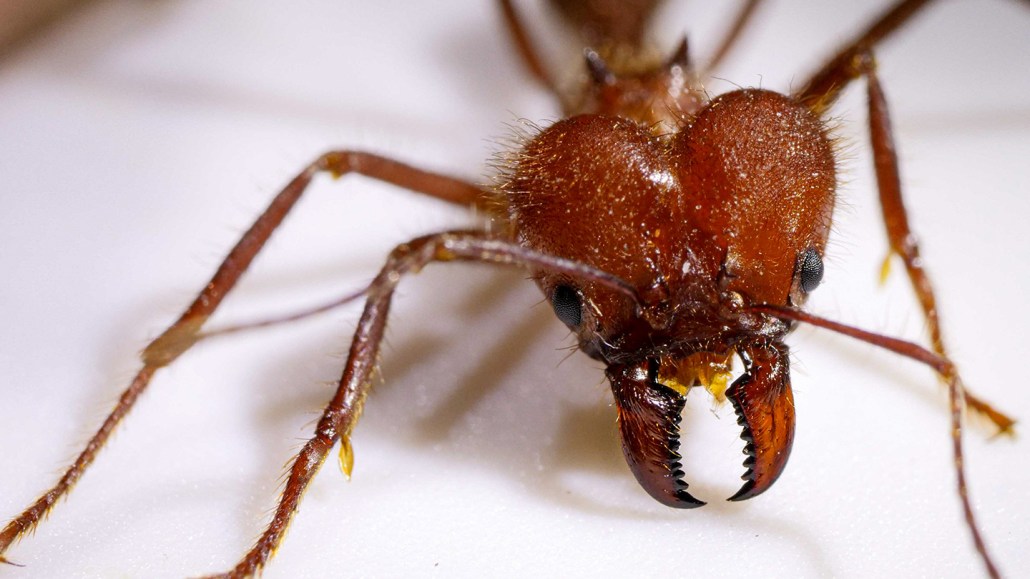
Leaf-cutting ants (Atta cephalotes) have jaws lined with “teeth” kept razor sharp by interspersing zinc atoms among proteins.
Ryan Garrett

Leaf-cutting ants (Atta cephalotes) have jaws lined with “teeth” kept razor sharp by interspersing zinc atoms among proteins.
Ryan Garrett